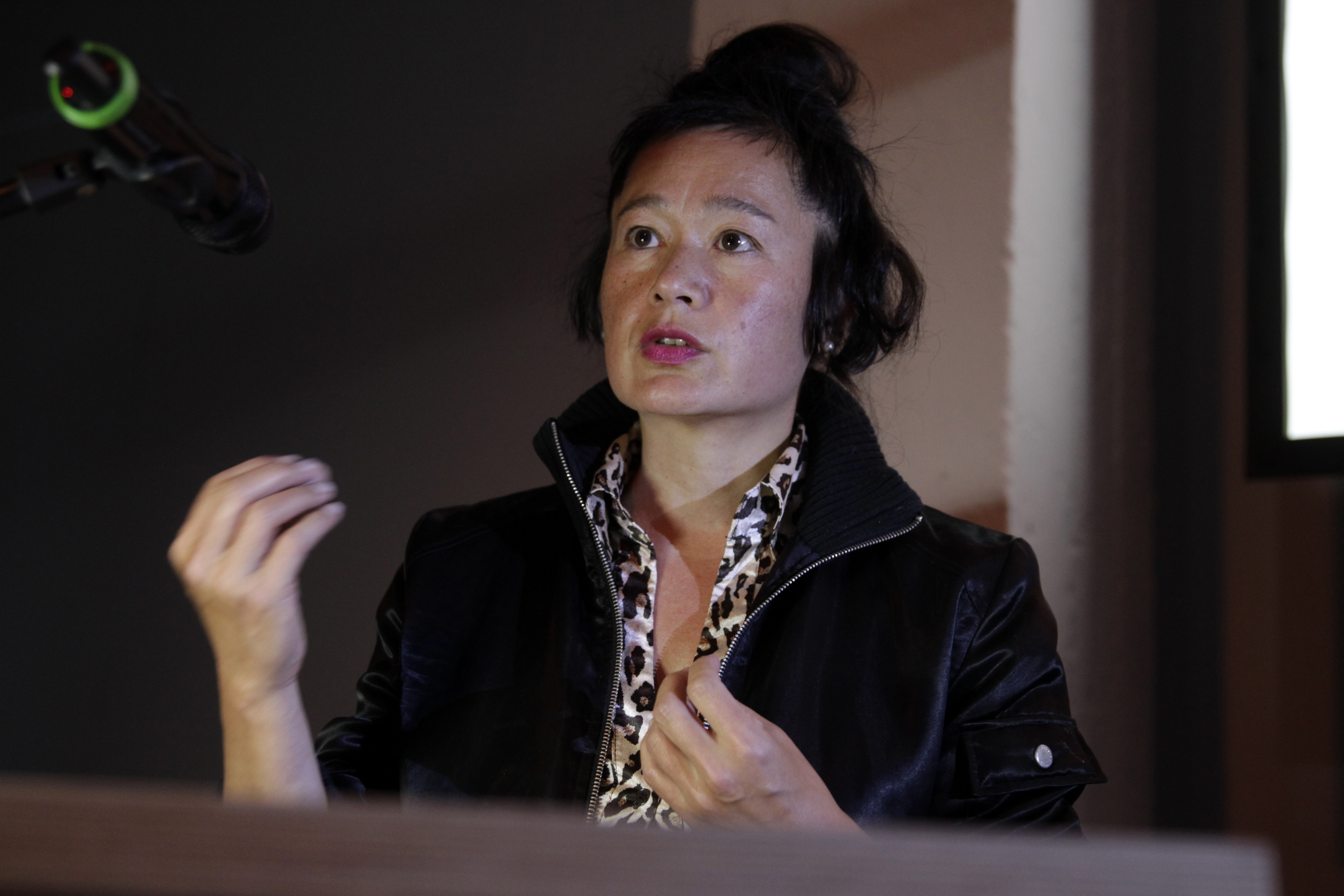
At the preview for her new exhibition at the Serpentine Sackler gallery in London, artist Hito Steyerl took the opportunity to address what she called the “elephant in the room”: the institution’s firm ties to a family that is widely blamed for profiting from the opioid epidemic in the United States, which has killed more than 200,000 people since 1999.
“It is very difficult for a single person, an artist, or an institution, to handle this tricky situation,” the visibly nervous artist said after introductory remarks, adding that the gallery’s “association to a family who are under a lot of critical scrutiny for good reason” was problematic.
Likening the situation to being unknowingly married to a serial killer for years, she called on the art world to “pull together and start solving the problem” by finding legal ways to sever ties with the family, which has profited enormously from the sale of the opioid drug OxyContin, the drug at the center of the epidemic in the US.
The artist’s show, titled “Hito Steyerl: Power Plants,” includes an augmented reality app through which visitors can see a version of the building’s façade where the Sackler name is notably absent.
“If we don’t address this problem, if we allow these criminal activities to infiltrate the art world, there will be long-term consequences,” Steyerl said.
Explaining that she was unsure of exactly how to handle the situation, the artist designed a piece of “future-predicting” AI technology that offered a helpful and unexpected suggestion for how to solve the Sackler problem.
“It said ‘I see no problem,’ predicting that in the near and foreseeable future, everyone will pull together to solve to preserve this art world, and this problem will not exist,” the artist said.
The Serpentine Sackler Gallery in London. Courtesy of the Serpentine Galleries.
Steyerl told her audience that she had consulted with the photographer Nan Goldin, who has been campaigning hard against the Sackler family’s presence in the art world through her activist group, P.A.I.N. Echoing Goldin’s demands, Steyerl called on institutions bearing the family’s name to undergo an “un-naming” process, which she admitted would be “tricky,” while adding that even a conversation about it would make a difference. She also asked that institutions publicly declare whether they would continue to accept funding from the problematic family.
A spokesperson for the Serpentine said the gallery had been expecting Steyerl’s statements, which emerged in discussion with the artist.
“The Serpentine is a gallery that supports artists and their right to express their views,” the spokesperson said. “We’ve heard what Hito Steyerl has had to say today on the eve of her exhibition at the Serpentine and the important issues that she has highlighted.” She added: “we have no future plans to accept funding from the Sacklers.”
But thus far, there are no plans to remove the Sackler name from the institution. (Seperately, the Sackler Trust, which has made historic donations to the Serpentine, and the Dr. Mortimer and Theresa Sackler Foundation have paused all philanthropic giving for the moment.)
Steyerl’s exhibition, which opens to the public tomorrow, April 11, is centered on themes of societal power and inequality, and includes video installations showing an imagined future garden. It also marks the launch of an augmented reality app called “Actual Reality,” which allows users to visualize data about inequality in the neighborhood surrounding the Serpentine Sackler Gallery, which has one of the starkest rates of economic disparity in Europe.
“Hito Steyerl: Power Plants” is on view at the Serpentine Sackler Gallery, West Carriage Drive, London W2 2AR, April 11–May 6, 2019.